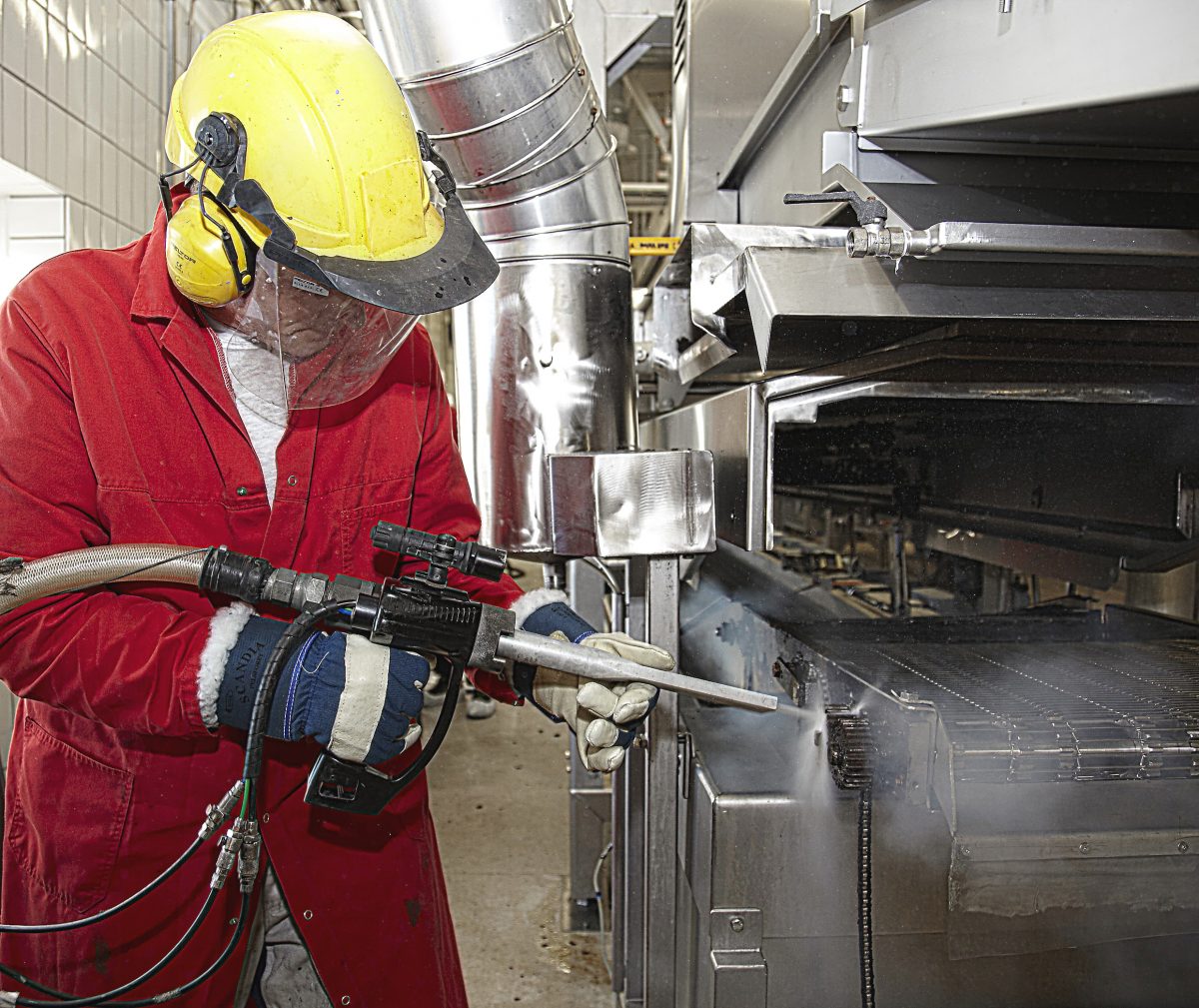Dry Ice Cleaning Safety
Although dry ice is a natural cleaning agent, there are still a few safety precautions you should take before, during, and after using dry ice. This is especially the case when using a dry ice blasting machine. It is recommended that you read the manufacturers instructions, and seek the advice of a professional before using one on your own. Knowing how to safely handle dry ice and how operate the equipment is an important step in making sure that you stay safe and that the cleaning is done effectively and efficiently.
It is important to always inspect your equipment before and after use. Have a thorough look over at the blast unit, hose, cables, guns, and nozzles before and after blasting to be sure there is no damage and that everything is secured properly. All blasting machines have proper unit pressure levels so always know how to check and monitor the unit pressure.
Other things to be aware of when using a dry ice blasting machine or handling dry ice:
- DO NOT use the dry ice blasting machine if you are wearing a pacemaker, as it may cause pacemakers to malfunction.
- Wear proper protective gear: eye protection, ear protection, and gloves. Dry ice temperatures generally sit around -109.3 degrees fahrenheit (-78.5 Celcius) so it should always be handled with care using gloves and/or a protective cloth. Just bumping the dry ice will likely cause no damage, but prolonged exposure (i.e. holding dry ice) will cause your skin cells to freeze which reacts similar to a burn wound.
- Only use a dry ice blaster in well ventilated areas. Since it is using CO2 to clean surfaces, if there is no way for the air to flow or ventilate it can rise the areas CO2 levels to a dangerous level. If dry ice is kept in an enclosed, non-ventilated space for more than 10 minutes, it is best practice to let the area air out before entering.
- If you need to store your dry ice, be sure to keep it in a well-insulated container. This will slow the sublimation rate. Do not store it in an airtight container. Some ventilation will allow for the CO2 to escape. If there is no ventilation, it is possible that the container will expand or even explode over time.
- Avoid setting your dry ice directly onto any surfaces. Due to the extremely low temperature of dry ice, it can cause certain surfaces commonly found in homes to split and/or break.
- When you are finished with your project, you may have some dry ice left over. It is advised to keep it unwrapped in a well ventilated area at room temperature to let it properly sublimate or evaporate into the atmosphere.
- Don’t work alone while blasting. If there are people around to monitor the person using the dry ice blaster, they can be an extra set of eyes to avoid dangerous situations.
Dry ice blasting has become a well-known and common natural way to clean-up fire damage, mold, mildew, grease, adhesives, etc. With its gaining in popularity, it is important to understand how the equipment works and the possible dangers involved. Follow the manufacturer’s safety and operating guidelines, as well as those listed above. With those things in mind, you should have an easy and enjoyable cleaning experience.

